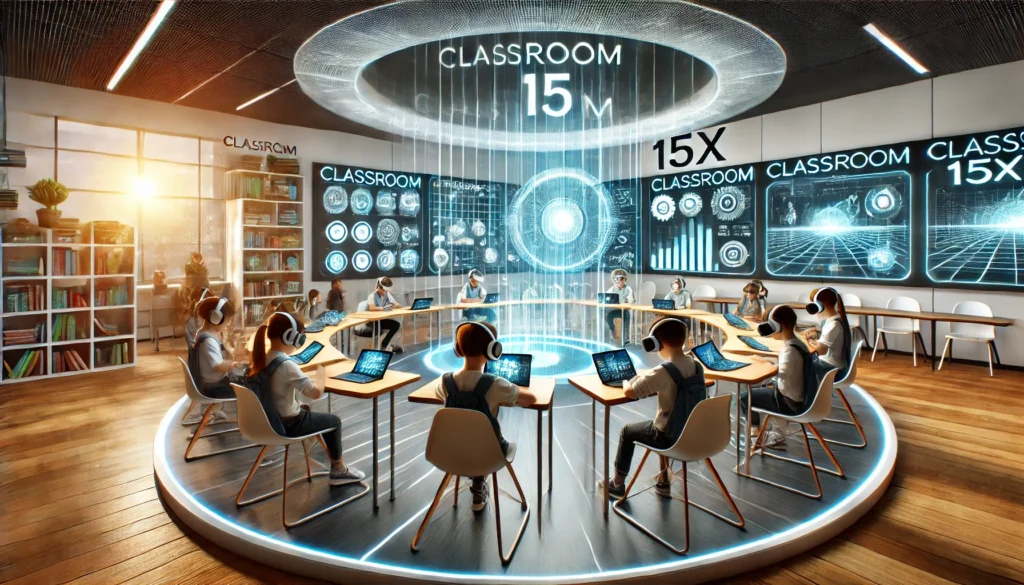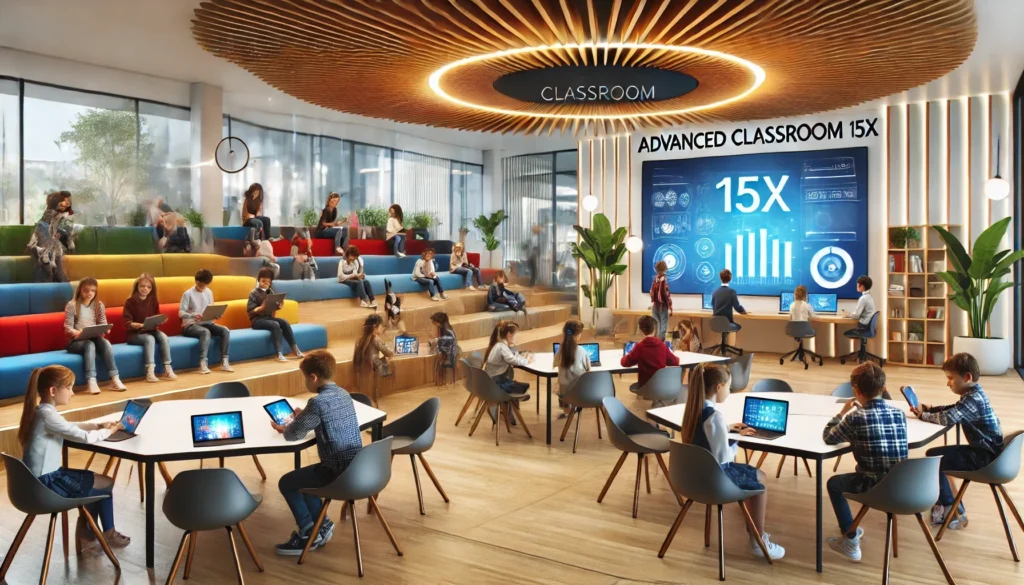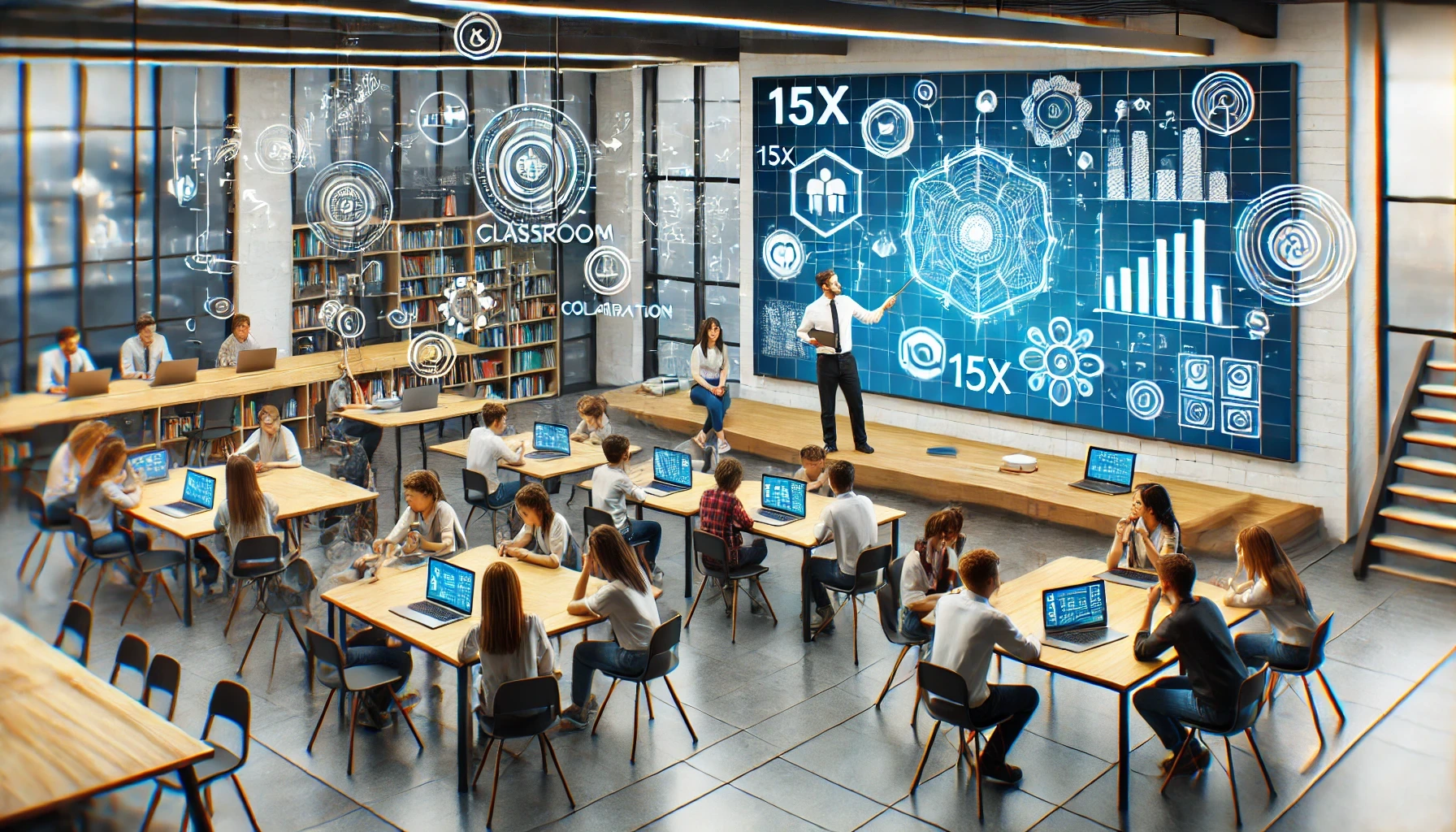In the ever-evolving landscape of education, traditional teaching methods are gradually being replaced by more dynamic, technology-driven approaches. One such transformative concept is “Classroom 15x,” an innovative model designed to amplify learning experiences, improve student engagement, and optimize educational outcomes. Classroom 15x represents a strategic shift from conventional classrooms, emphasizing advanced technologies, interactive learning environments, and personalized instruction.
- The Evolution of Traditional Classrooms to Classroom 15x
- Key Features of Classroom 15x
- Benefits of Implementing Classroom 15x
- How Classroom 15x Enhances Student Engagement
- Technological Innovations in Classroom 15x
- Classroom 15x vs. Traditional Classroom
- Steps to Transition to a Classroom 15x Model
- Challenges in Implementing Classroom 15x and How to Overcome Them
- Future of Education with Classroom 15x
- Conclusion
The Evolution of Traditional Classrooms to Classroom 15x
The journey from traditional classrooms to Classroom 15x reflects the broader changes in education over the past few decades. Traditional classrooms often relied on a one-size-fits-all approach, with limited interaction and a heavy focus on rote memorization. However, as technology advanced and educational research highlighted the importance of active learning, the need for a more adaptive and engaging classroom environment became evident. Classroom 15x emerged as a response to these needs, integrating cutting-edge tools and methodologies to create a more effective learning ecosystem.
Key Features of Classroom 15x
Classroom 15x is characterized by several distinctive features that set it apart from traditional educational models:
- Technology Integration: Incorporation of smart boards, tablets, virtual reality (VR), and augmented reality (AR) to facilitate interactive learning.
- Personalized Learning Paths: Tailored educational experiences that address individual student strengths, weaknesses, and learning styles.
- Collaborative Spaces: Flexible seating arrangements and group work areas that encourage teamwork and peer-to-peer learning.
- Real-Time Feedback Mechanisms: Digital tools that provide instant feedback to both students and educators, enabling continuous improvement.
- Data-Driven Instruction: Use of analytics to track student performance and adjust teaching strategies accordingly.

Benefits of Implementing Classroom 15x
Adopting the Classroom 15x model offers numerous advantages:
- Enhanced Engagement: Interactive tools and dynamic teaching methods capture students’ attention more effectively than traditional lectures.
- Improved Academic Performance: Personalized learning helps students grasp complex concepts at their own pace.
- Greater Collaboration: Students develop critical social and teamwork skills through collaborative projects.
- Adaptability: The flexible structure allows for quick adaptation to new teaching methods and technologies.
- Teacher Empowerment: Educators have access to a wide range of resources and real-time data to refine their instructional techniques.
How Classroom 15x Enhances Student Engagement
Student engagement is a cornerstone of academic success. Classroom 15x fosters engagement through:
- Interactive Content: Multimedia presentations, gamified learning, and VR simulations make lessons more compelling.
- Student-Centered Learning: Encouraging active participation, discussions, and problem-solving activities.
- Immediate Feedback: Students receive real-time insights into their performance, which motivates continuous improvement.
Technological Innovations in Classroom 15x
Technology is the backbone of Classroom 15x. Key innovations include:
- Smart Technologies: Interactive whiteboards, learning management systems (LMS), and AI-driven educational software.
- Virtual and Augmented Reality: Immersive experiences that bring abstract concepts to life.
- Cloud-Based Learning: Access to educational materials anytime, anywhere, promoting flexible learning environments.
Classroom 15x vs. Traditional Classroom
| Aspect | Traditional Classroom | Classroom 15x |
|---|---|---|
| Teaching Method | Lecture-based | Interactive, student-centered |
| Technology Use | Limited | Advanced, integrated tools |
| Learning Approach | Uniform for all students | Personalized learning paths |
| Student Engagement | Passive | Active and dynamic |
| Feedback Mechanism | Periodic | Real-time, continuous |
Steps to Transition to a Classroom 15x Model
Transitioning to Classroom 15x involves several strategic steps:
- Assessment: Evaluate current teaching methods and identify areas for improvement.
- Training: Provide professional development for educators to adapt to new technologies.
- Infrastructure Upgrade: Invest in necessary technological tools and flexible classroom furniture.
- Curriculum Redesign: Align curriculum with interactive and personalized learning strategies.
- Continuous Evaluation: Regularly assess the effectiveness of the Classroom 15x model and make adjustments as needed.
Challenges in Implementing Classroom 15x and How to Overcome Them
While Classroom 15x offers numerous benefits, its implementation can pose challenges:
- Cost Constraints: Advanced technologies require significant investment. Solution: Seek grants, partnerships, and phased implementation strategies.
- Resistance to Change: Some educators and institutions may be hesitant. Solution: Provide comprehensive training and demonstrate the benefits through pilot programs.
- Technical Issues: Reliance on technology can lead to technical difficulties. Solution: Ensure robust IT support and backup plans.

Future of Education with Classroom 15x
Classroom 15x is not just a trend but a glimpse into the future of education. As technology continues to evolve, Classroom 15x will adapt, incorporating new innovations to further enhance learning experiences. This model prepares students not just for academic success but for the demands of the modern workforce, where critical thinking, collaboration, and technological proficiency are essential.
Conclusion
Classroom 15x represents a revolutionary shift in educational practices, combining technology, personalized learning, and interactive environments to create a more effective and engaging classroom. By embracing this model, educators can significantly enhance student outcomes, preparing them for a future where adaptability and continuous learning are key.
